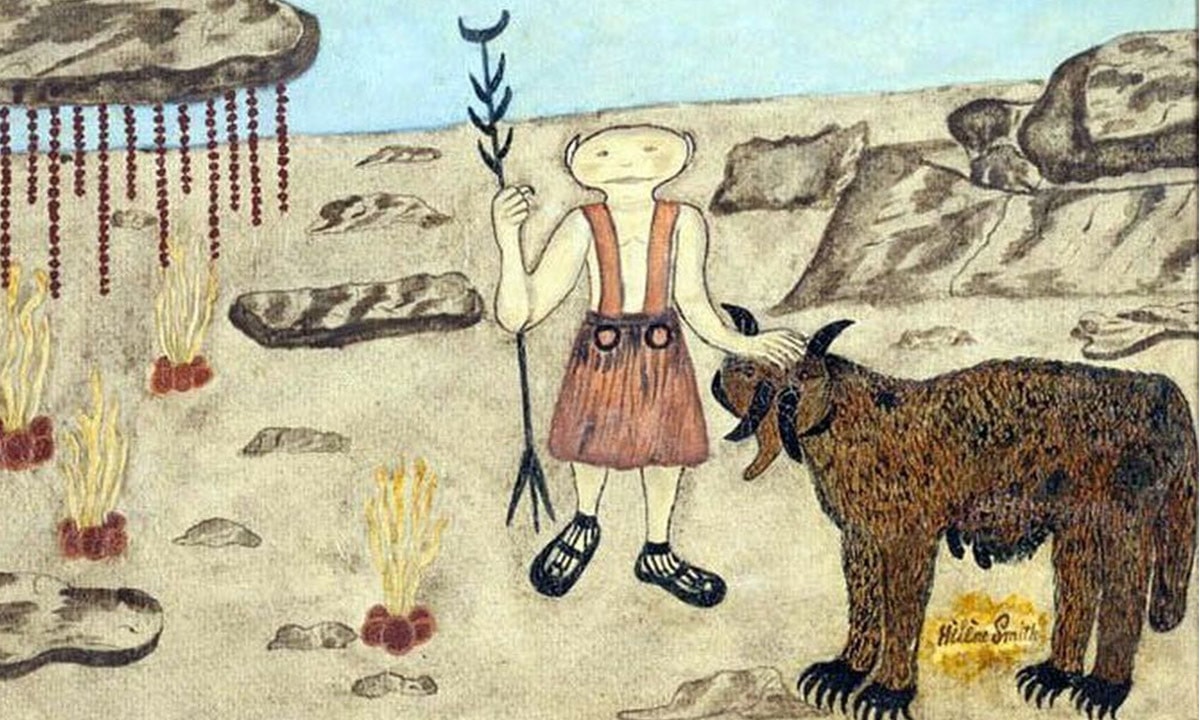by ANU KUMAR
 The Martian landscape, as described by Hélène Smith PHOTO/ Wikimedia Commons
The Martian landscape, as described by Hélène Smith PHOTO/ Wikimedia Commons
In the 1890s, a woman in Geneva described her previous incarnations as a Hindu princess, a French queen, and her travels to Mars. Hélène Smith’s story is narrated in From India to the Planet Mars: A Study of a Case of Somnambulism with Glossolalia, a book published first in French by the Swiss psychologist, Theodore Flournoy (1854-1921) who taught at the University of Geneva.
Translated into English in 1899, by Daniel Vermilye – who was once accused of defrauding banks – Flournoy’s book became widely available to western audiences and received rave reviews. From India to the Planet Mars described the remarkable mediumistic qualities of Catherine-Elise Muller, a young shop girl in Geneva who took on the name of Hélène Smith as a medium.
Flournoy first met Smith in 1893 and became an observer of her journeys into the spirit world for over five years. He did not set out to discredit her but relied on a method of detached observation, recording all data meticulously and non-judgementally, aiming to provide possible rational explanations for all he had witnessed.
Smith’s three distinct spirit stories were narrated in a serial-like form. The story of the princess Simandini began with her committing sati in 1402, following the death of her husband, the prince Sivrouka Nayaka of Chandragiri (or in some versions, Tchandragiri) in “Kanara on India’s west coast”. Simandini, as a later séance episode revealed, had been an Arab maiden who had fallen in love with Sivrouka. Smith cited customs, costumes and even the architecture of the time.
As Simandini, Smith replicated in every sense an “Oriental” princess with “the poses of a priestess”, singing “exotic melodies, played with an imaginary monkey”. She even “stretched on a sofa with the snake like movements of a real princess”. But what appeared extraordinary was the Sanskrit Smith spoke and wrote in – a language she had, as her past showed, little idea of. Her writing also revealed a few Arabic phrases.
Flournoy’s search of Geneva’s libraries turned up a volume on Indian history written in French by an obscure historian called De Marles. The book contained the entire story of Sivourka Nayaka and his ill-fated wife. A later search also revealed a book of elementary Sanskrit grammar in the very room Smith gave her séances in. As Flournoy rationalised, Smith perhaps knew of the story. She had even learnt something of Sanskrit grammar, but all this also appeared to suggest Smith’s amazing powers of memory and imagination.
Herald for more
